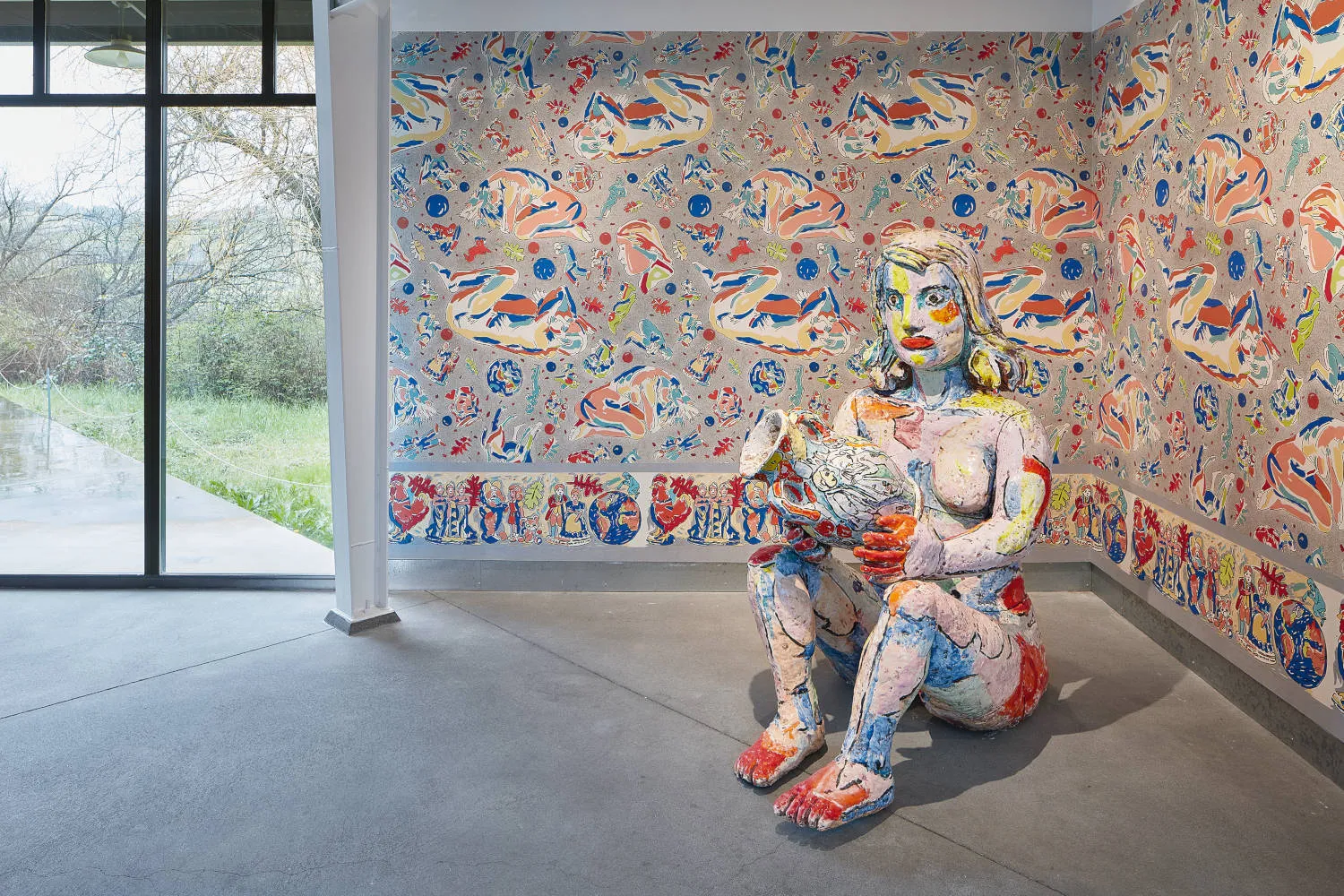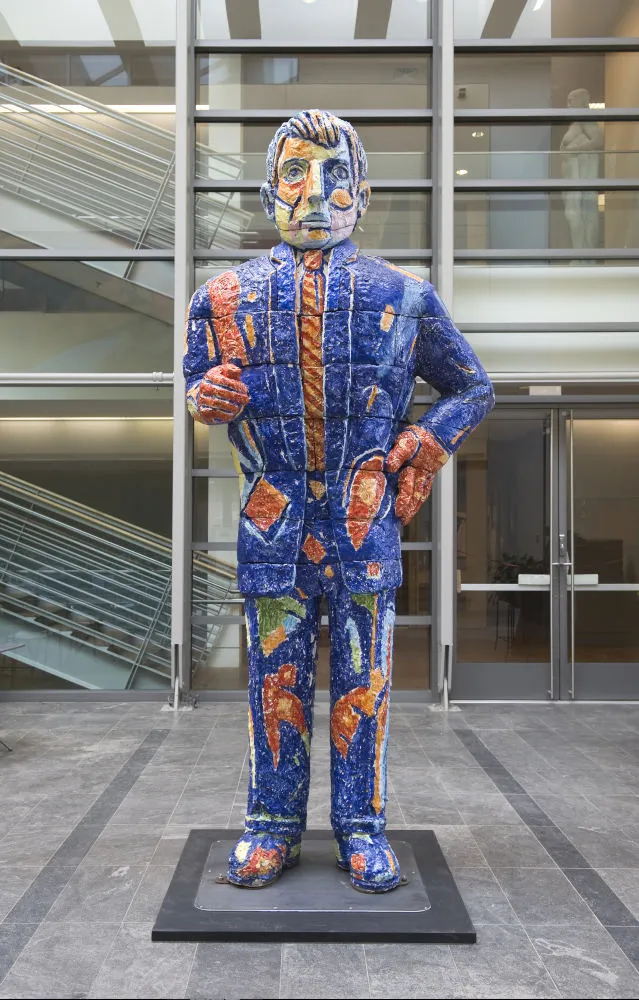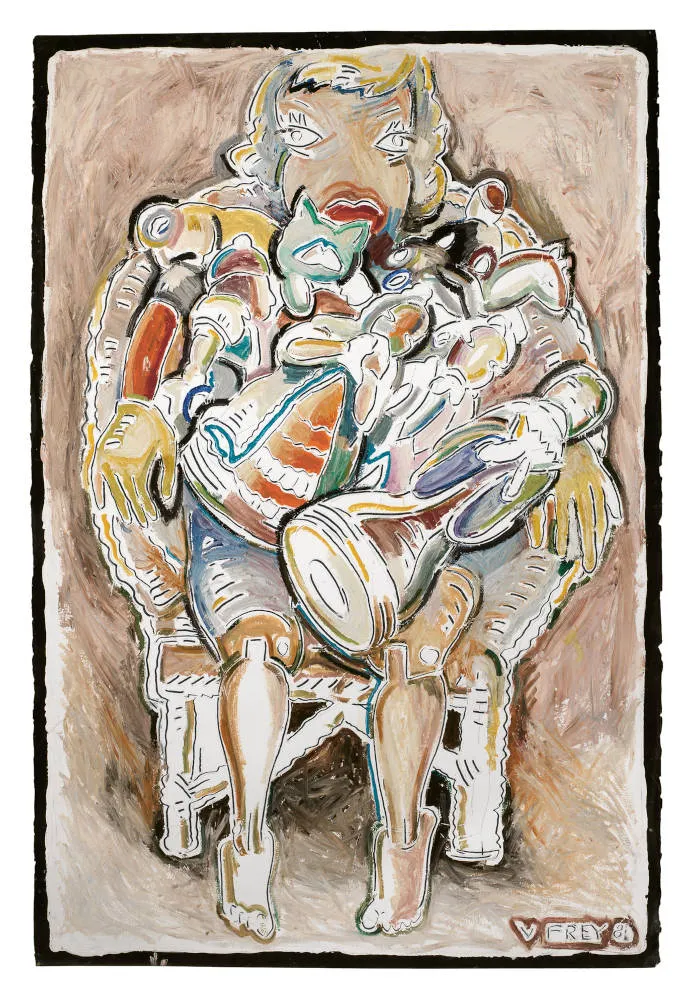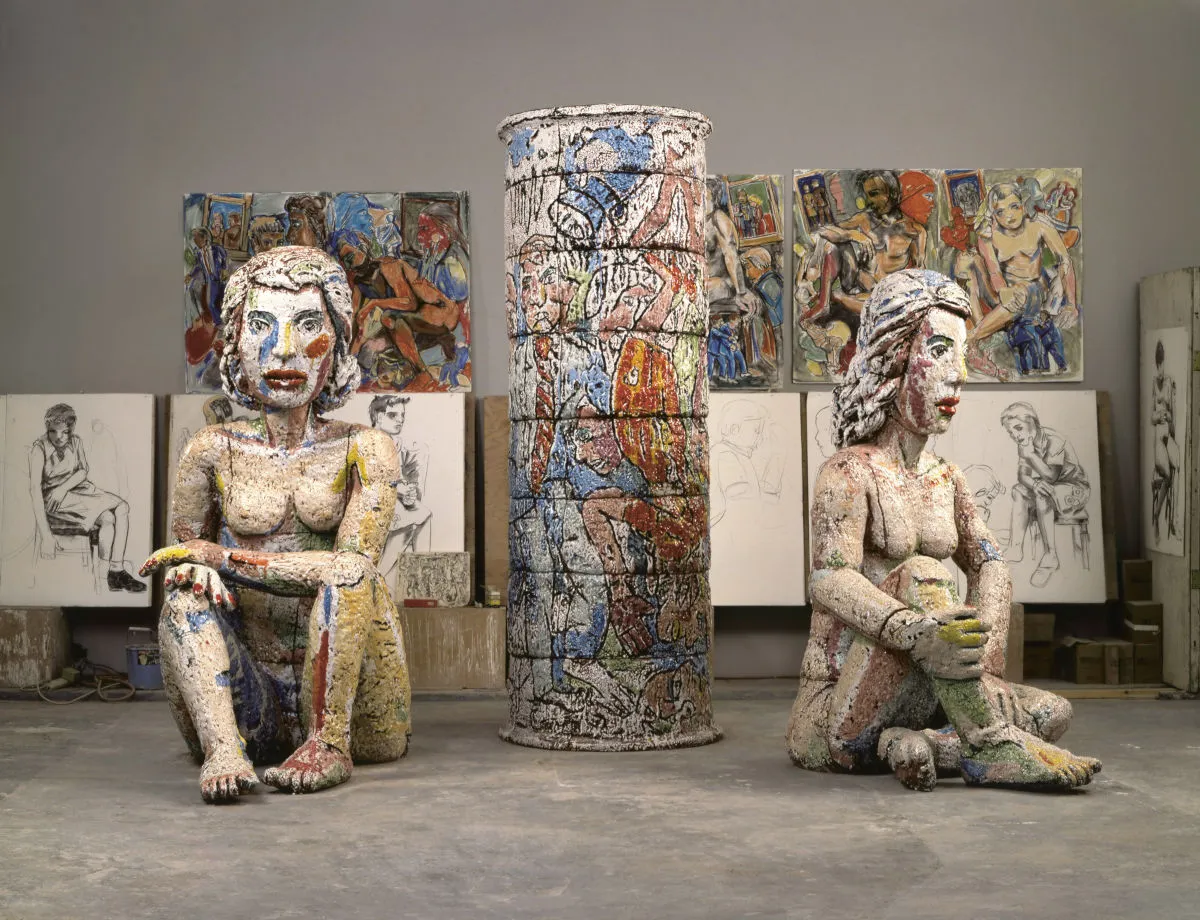 Artworks by Viola Frey installed at her 1089 Third Street studio, Oakland, 1994. Photo: John Wilson White
Artworks by Viola Frey installed at her 1089 Third Street studio, Oakland, 1994. Photo: John Wilson White Influenced by her surroundings, American artist Viola Frey (1933-2004) scaled her art to fit the world she inhabited. Her small backyard pushed her toward verticality, while the large warehouse studio provided enough space to explore horizontal forms. Beyond her studio, her house served as a makeshift gallery where Frey arranged her sculptures, which later inspired presentations of her work in museums and galleries.
A new monograph, Viola Frey: Artist's Mind/Studio/World, charts these scales and relations, revealing the portrait of an artist deeply invested in her practice and committed to capturing everything that made up her realm. She regarded clay, her primary medium, uniquely suited to preserve the transitory nature of what she observed:
What have I done with clay? I have made records of what has been and what is. I have attempted to make a permanent whole of the transitory fragments I have seen around me. Clay has the quality of right now!
Alongside her clay work, which she fired, glazed, and painted, she also explored painting, photography, and assemblage, seeking a visual language that could best capture the nature of our world.
From her installations and her obsession with flea markets and the mass of oddities she collected there, to her public works, Frey combined unique expression with sharp sentiment and a keen understanding of identity, power relations, and the art world at large. The new publication offers a timely opportunity to revisit Frey and the different facets of her work, whose inventiveness and vitality continue to resonate among artists and audiences alike.
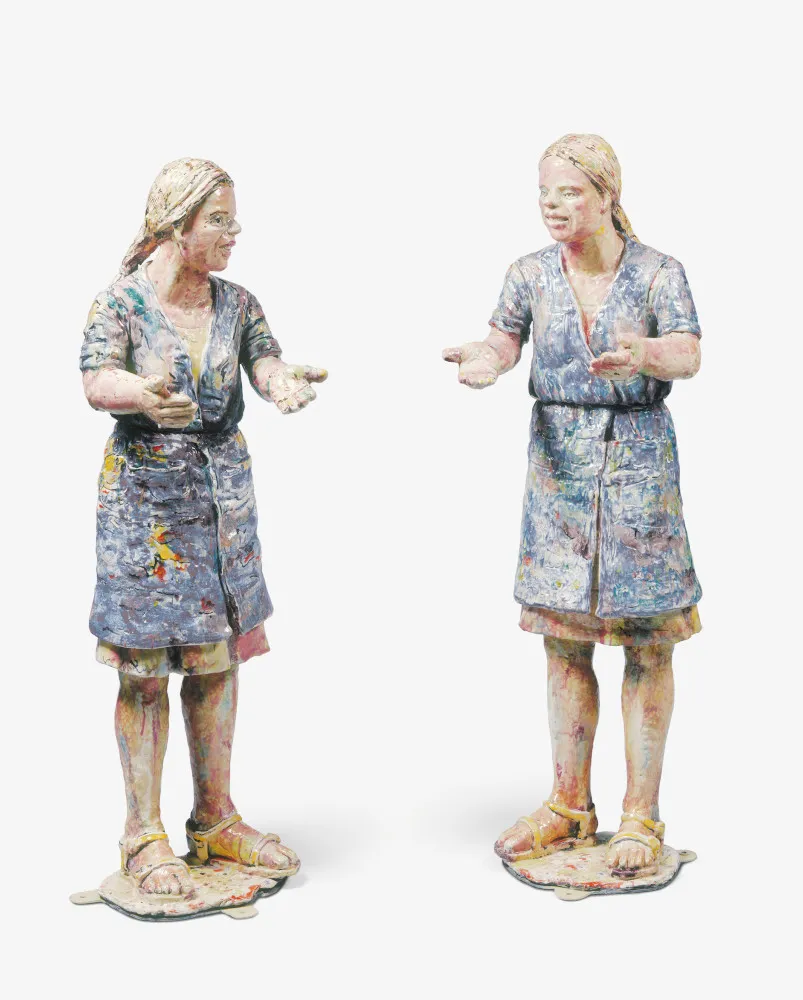
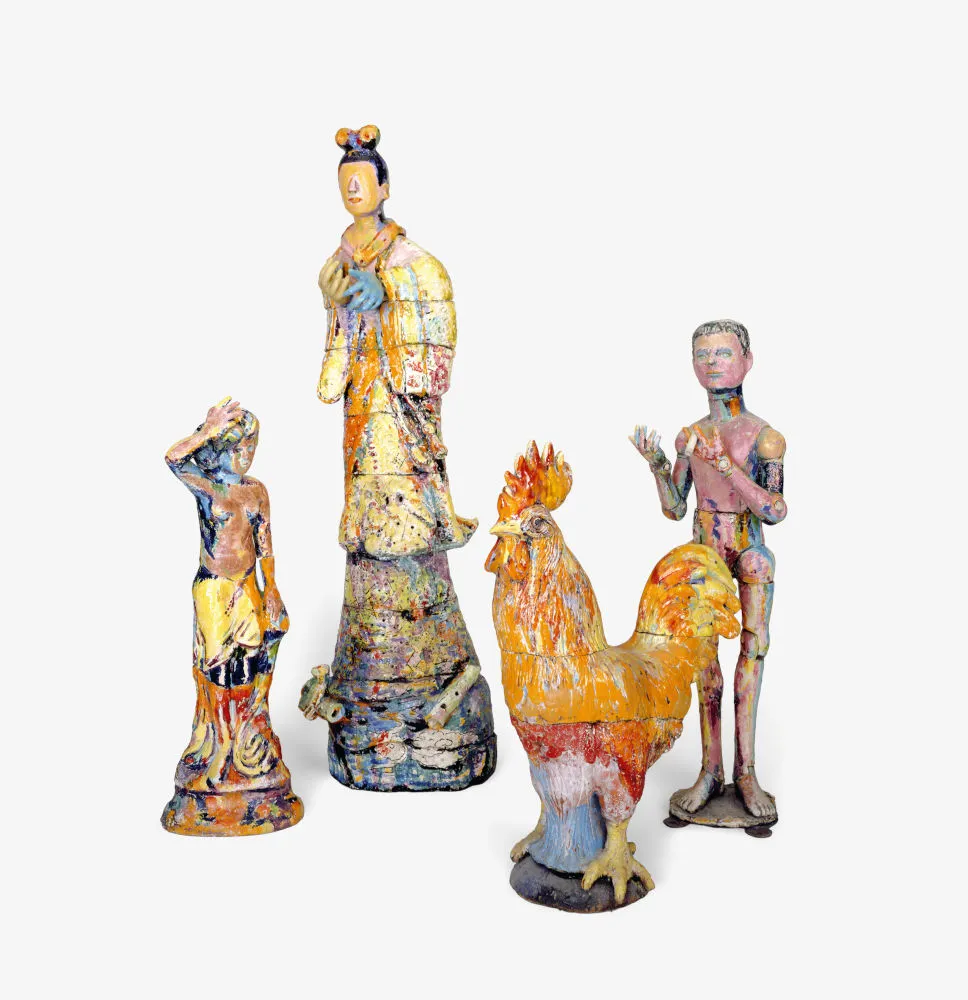
A photograph shows a pensive young woman seated on a curb dividing a lush garden filled with white and yellow flowers and rich green foliage from a path. Engrossed in sketching, with feet set close together and knees supporting the sketchbook, this is Viola Frey, captured at the California College of Arts and Crafts in 1965. Her alma mater formally introduced her to painting and ceramics, though she approached the latter reluctantly. The mixture of seriousness and playfulness in the photo corresponds with Frey’s artistic style and temperament, her sculptures command serious themes with a glint of mischievousness and a disarming honesty rarely encountered, extending from the artist to the world she created.
Frey was born in Lodi, California, and spent her career living and working in Oakland. Educated at CCAC where she received a B.F.A., she later continued her academic explorations at Tulane University in New Orleans. In 2000, she received an Honorary Doctorate from CCAC, where she taught for 30 years.
Although clay was her medium of choice, Frey refused to major in craft. Instead, she focused on painting, later revealing that she disliked the idea of craft, and particularly book-binding. This, however, did not stop her from taking ceramic classes, which brought her in contact with a diverse group of people. "It seemed more like the real world. It was a community," she explained.
After graduation, she entered the graduate arts program at Newcomb College, Tulane University, where she studied briefly under Mark Rothko, a visiting artist-in-residence in 1957. He became a major influence on her use of colour, with other influences including artists Richard Diebenkorn and Katherine Choy. However, her greatest influence proved to be the farm where she grew up.
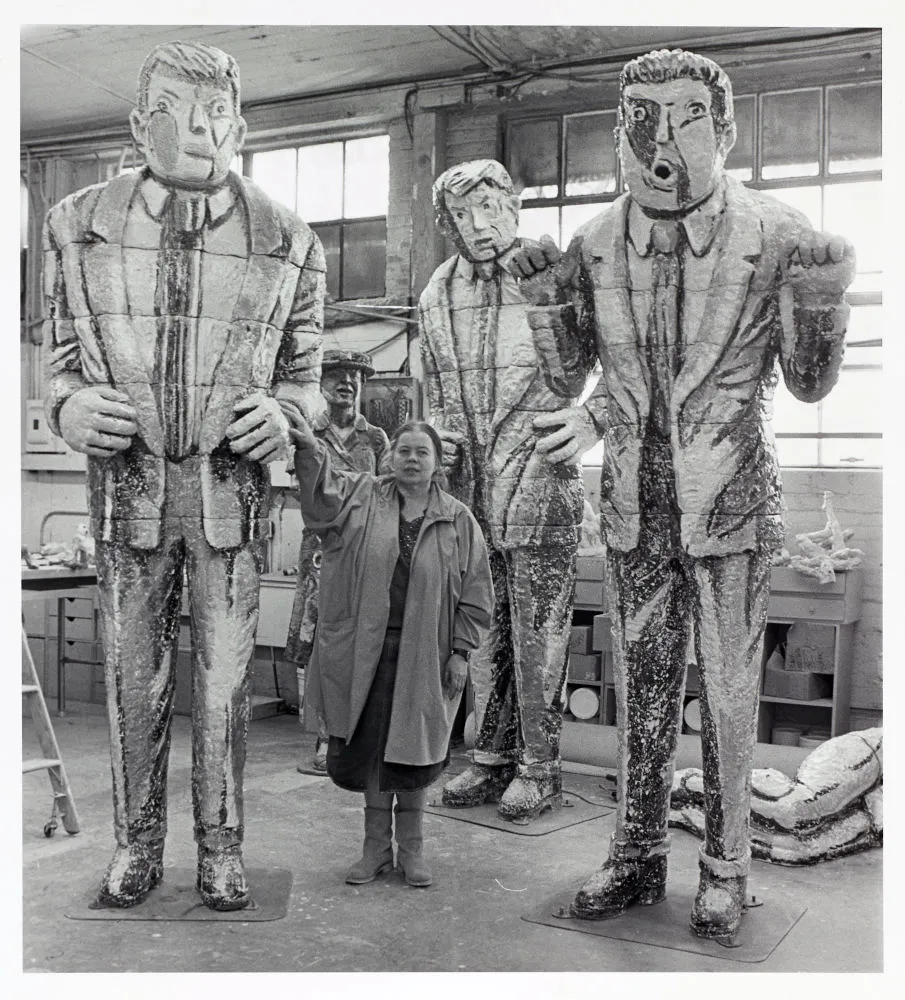
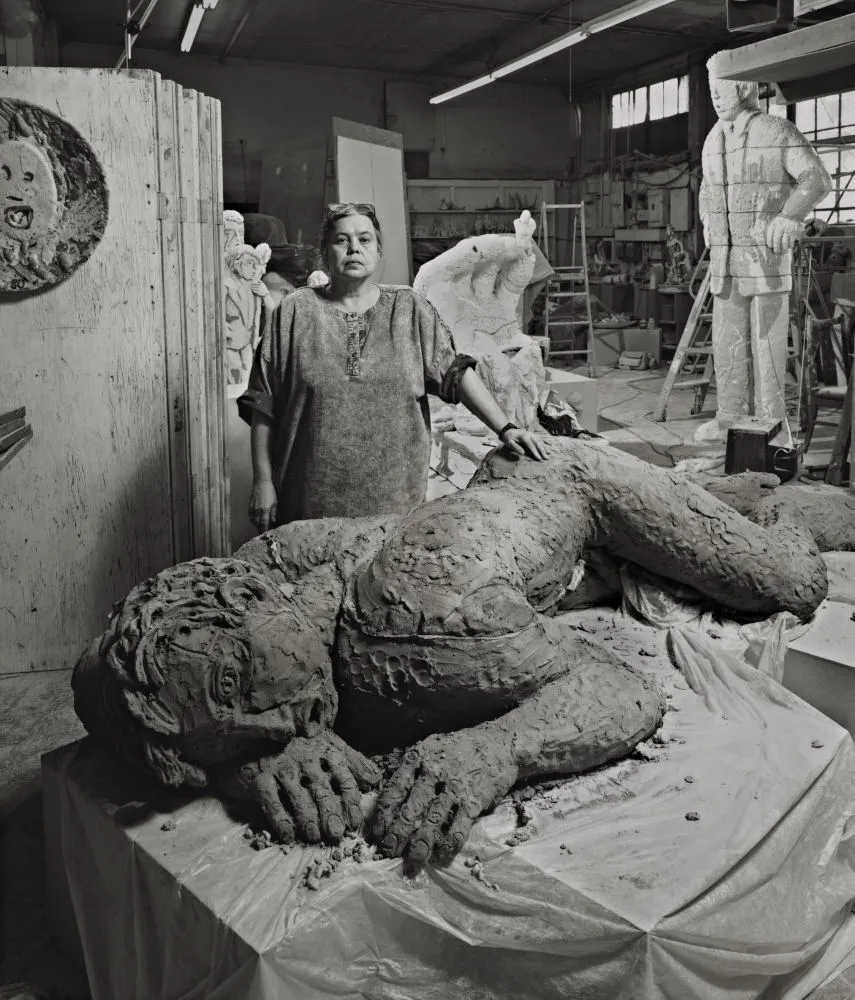
The farm sharpened her sense of place, which would become a central aspect of her work, and gave her the foundation to explore subjects close to her heart. She grew up in a farming community in Lodi, and would later add 'farm, farmers, farmland' to her written list of inspirations. She returned to the farm after her father's death, and it was then that she "artistically begin to make statements" that concerned her. It helped her find her voice.
The most important place for Frey, apart from her childhood farm, was her Georgian colonial house, at 663 Oakland Avenue in Oakland.
All my information and subject matter came from that house and garden. Inside I did paintings and drawings, outside sculpture and paint[ed] ceramics. What any artist wants is subject matter and it was all around me.
She also set up a kiln in the basement, easing up her process and allowing her more space for experimentation. Soon, the whole house turned into a gallery-studio, filled with her paintings, drawings, and sculptures.
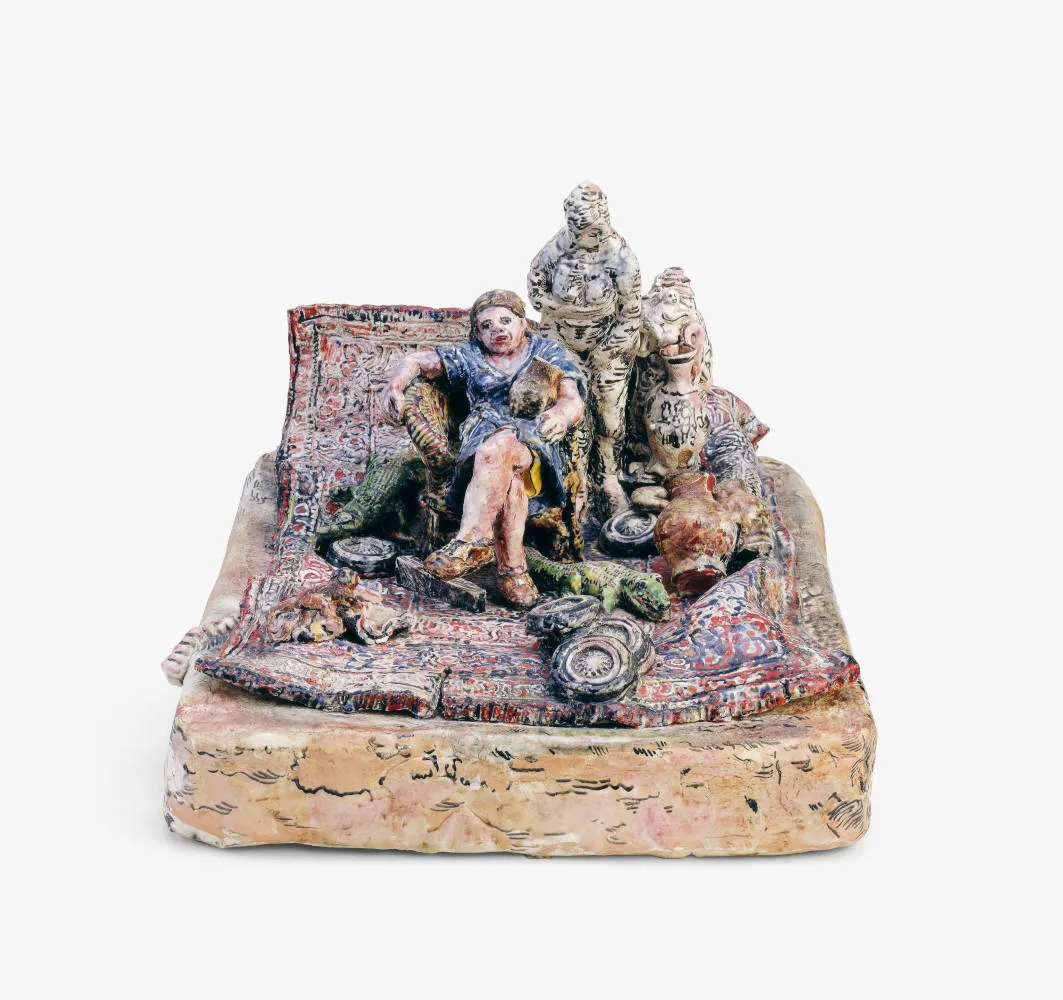
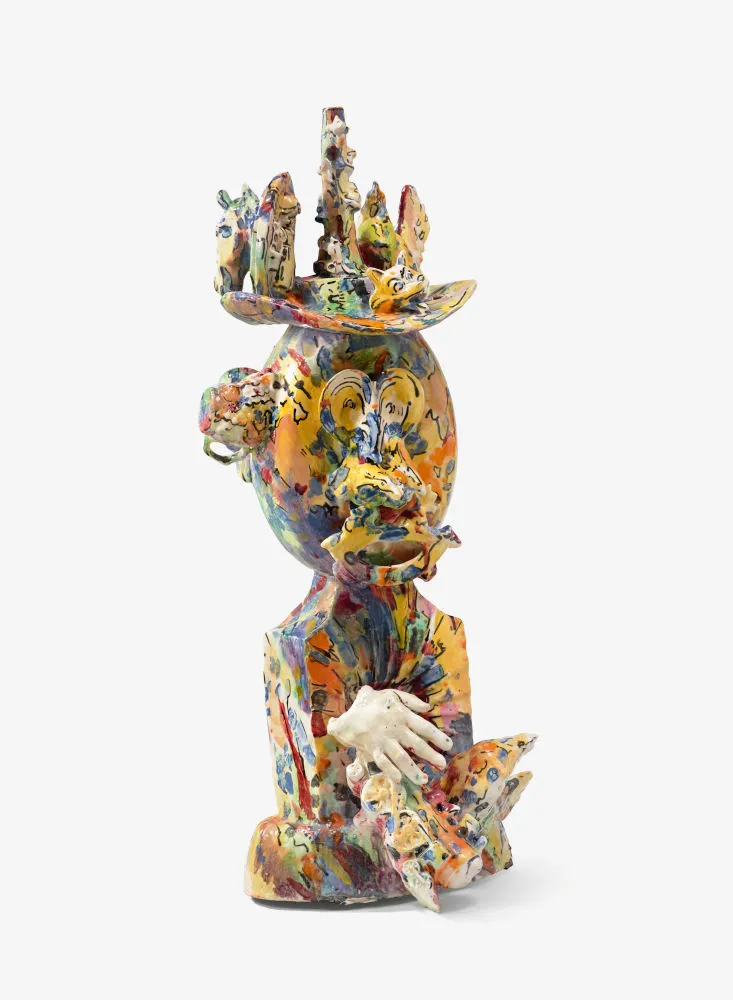
Describing Viola Frey's art is no easy feat. Her practice traverses materials, approaches, and mediums in ways best described as intrinsic, opulent, and florid, yet rooted in deep considerations of the world.
Although she predominantly focused on her immediate surroundings, her practice never drifted too far from pressing events and issues. She explored gender relations with her Pink Man and Woman figurines, the Grandmothers series, and addressed world events such as the fall of the Berlin Wall and the AIDS crisis.
Dedicated to a particular aesthetic that combines Eastern and Western influences, Frey's work is a vivid, optimistic rendering of objects and people, with strong outlines, unusual combinations, and a surplus of motifs and relations, making it complex to grasp in a single glance.
Her goblets from 1970 combine these aspects to a surprising effect. Relying on art historical examples that combine abstract, ornamental, and figural elements, Frey dives into these traditions to offer her playful interpretation, embedding a pink woman in the vessel's center. It is a colorful, almost childlike interpretation of this revered object, whose power is destabilized precisely at the point where this playfulness and historical meaning collide.
This tension between seriousness and play pervades her work. Dark and erotic undertones find their way into sculptural compositions in unexpected ways, fragments build on each other, and the line between control and chaos remains perpetually blurry. Her use of paint on ceramic enhanced this effect. The sculptures are rich in volumes and forms, but the application of color almost renders them flat, leading the eye over surfaces instead of volumes. Frey's assemblages are of the world, and the elements of this world are combined with a precise artistic imagination into chaos.
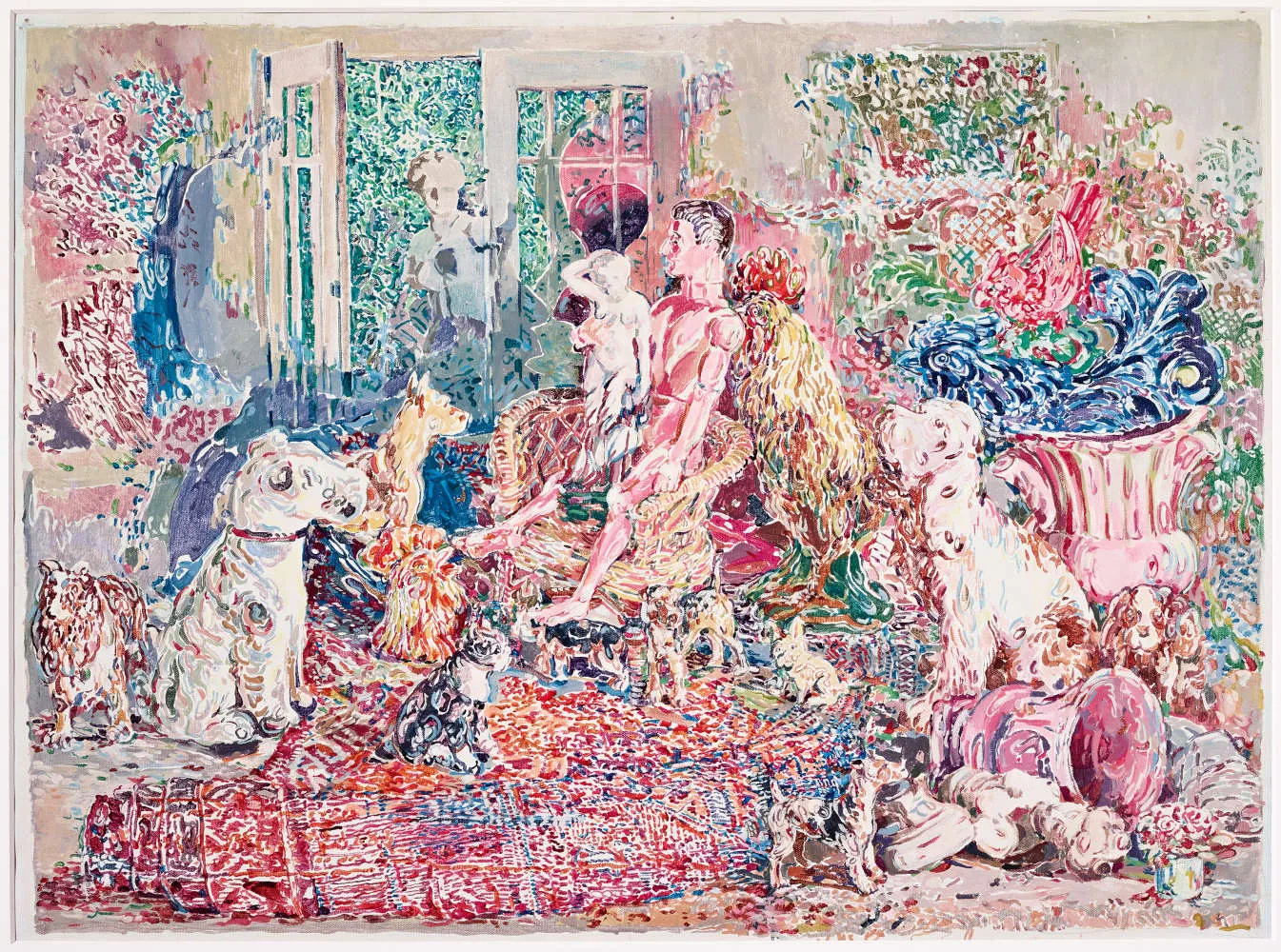
The same apparent chaos spilled over her house and studio, in carefully curated installations.
When you think about all the installation art, it is an attempt to bring the outside world back into the museums, which the museums had so terribly stripped themselves of. All artists do installations by the very nature of their own studios…
Frey's paintings follow the same aesthetics. The immensity of details renders these visions almost abstract, with careful tracing of lines and colors revealing figural forms hidden within. China Goddess Painting from 1975 is a good example of her style. Among rich foliage, a vase, a naked orange plastic doll, and what could be a miniature copy of an ancient statue emerge, next to other figurines which seem to be randomly arranged. A miniature Chinese vase set on a doll’s wicker chair seems to rule over this surreal realm.
Many of these objects, such as small figurines and dolls, Frey collected at flea markets. She used them not just in her assemblages and sculptures, but would also create excessive compositions which she would photograph. Finally, the best description of Frey’s art came from the artist herself, who defined it as a "unity of confusion of unwanted junk."
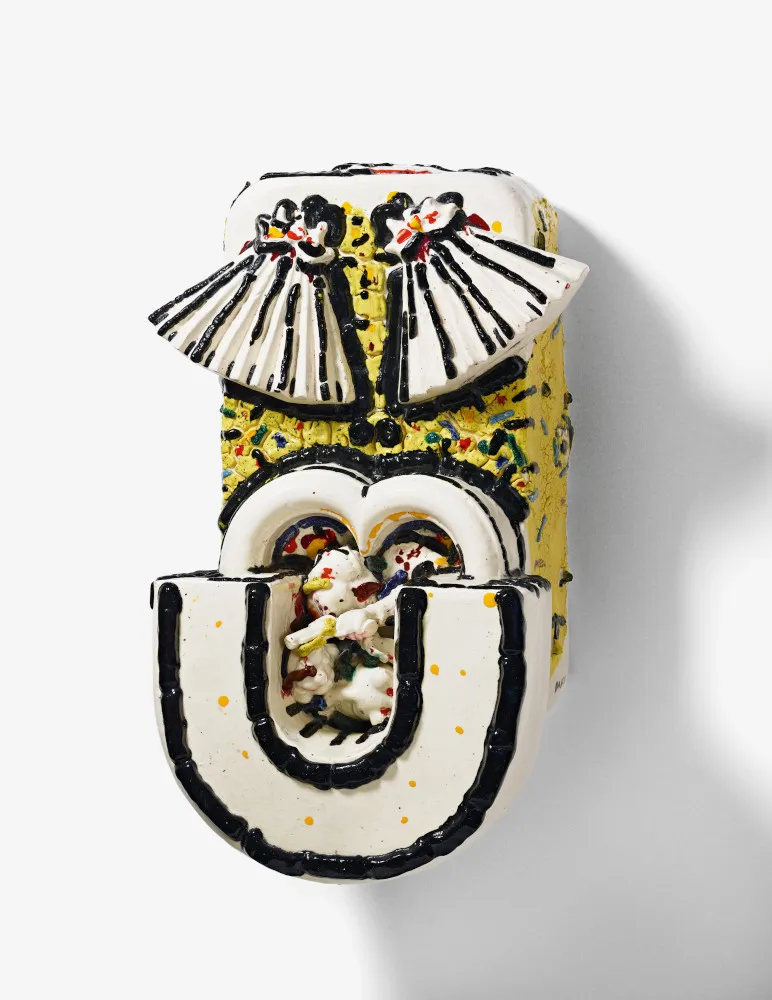
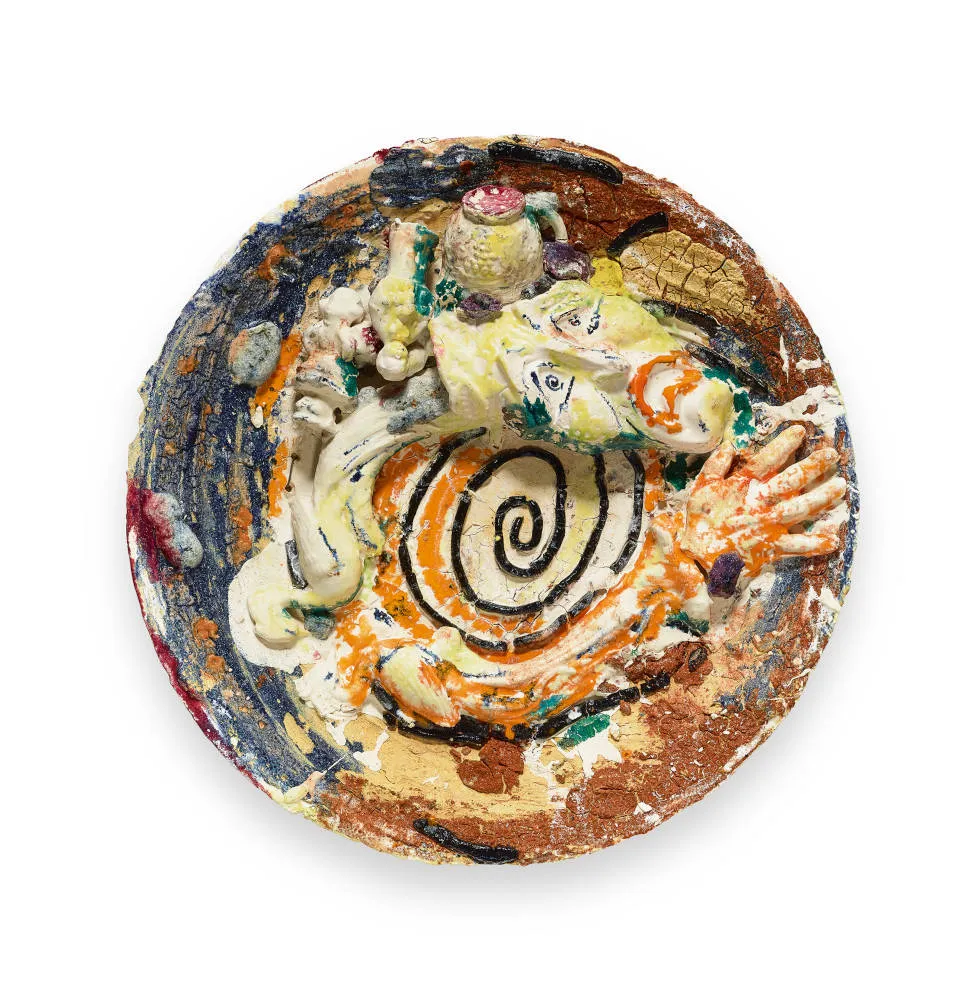
Jenelle Porter, one of the contributors to the new monograph, highlights Frey's fascination with junk and collecting. Flea market at Alameda, which the artist "canonized" in Alameda Flea Market series (1970-71) was for her a place where "all culture was represented." Starting with this series, figurines became central in Frey's practice. The Endangered Animal and Desert Toys series followed, tackling topics such as extinction and ecological degradation. In artist's words, they represented "those little universal fear things: no water in the desert, topsoil erodes away, we’re losing it all down the drain . . . to the car, to that cheap fuel." The Grandmothers, done in monumental scale, directly countered the tradition of male-centric monuments. Grandmothers instead of the general on the horse, she demanded. An urgent call that remains topical.
With her bricolages being political and powerful yet decorative, Frey established a trajectory in contemporary art which relies on visual confusion, opulence, and glossy textures to convey critique. Among the artists who continue this tradition are Ann Agee, Jeff Koons, Simone Leigh, Alessandro Pessoli, Woody De Othello, and Kathy Butterly, among others. It is a legacy that opened up the art field to the marginal, the discarded, and the forgotten, allowing them to enter from flea markets into art rooms, revealing a synthesis of preoccupations of universal importance.
Titled after Frey’s series from the 1980s, Artist's Mind/Studio/World is a richly illustrated publication authored by Cynthia de Bos, Nancy Lim, Jenelle Porter, and Jodi Throckmorton. It brings together various materials — including correspondence, slides, photographs, newspaper clippings, as well as major new critical texts—and is available from the Gregory R. Miller & Co website.
